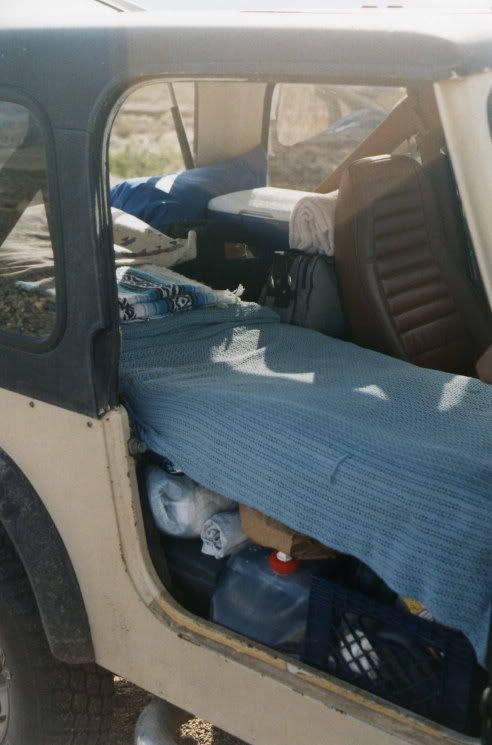Hi there,
I am a photographer based here in NY and am working on a photography project that is going to take me across the country and back over a period of 3 weeks and then back out again in July to finish up shooting. All that is basically to convey that I am going to be doing some major road tripping.
I recently purchased an old 1989 Jeep Wrangler Soft top (6 cylinder 4.2 litre) and hope to take that on the road. It has 115,000 miles on it and runs in great condition for the last month that I have been taking it around NY. I have had my mechanic give it a going over and aside from some new tires (Michelin LTX AT2's) that are going in today the car has been tuned up.
What advice do you have for a cross country road trip from NY to CA given that I am taking this car? I would appreciate any general advice that will help me better maintain the vehicle and also have a safe trip.
I also had a few specific questions:
1. how long at a time do you think these Jeeps can run without having to give it a break. Feel free to answer in hours or mileage.
2. Do people here carry ice boxes with them to store food, etc...? Any favorites or systems of use that I should know about.
3. Any body sleep in their jeep while travelling?
4. Any safety tips on how to find places to sleep. I am thinking of parking lots, truck stops, or residential areas but any veterans at this game should chime in.
5. things you must pack...
6. any modifications to vehicle that are necessary?
As you can see, I am an admitted novice and so any general advice or top priorities that occur to you would be appreciated.
I am a photographer based here in NY and am working on a photography project that is going to take me across the country and back over a period of 3 weeks and then back out again in July to finish up shooting. All that is basically to convey that I am going to be doing some major road tripping.
I recently purchased an old 1989 Jeep Wrangler Soft top (6 cylinder 4.2 litre) and hope to take that on the road. It has 115,000 miles on it and runs in great condition for the last month that I have been taking it around NY. I have had my mechanic give it a going over and aside from some new tires (Michelin LTX AT2's) that are going in today the car has been tuned up.
What advice do you have for a cross country road trip from NY to CA given that I am taking this car? I would appreciate any general advice that will help me better maintain the vehicle and also have a safe trip.
I also had a few specific questions:
1. how long at a time do you think these Jeeps can run without having to give it a break. Feel free to answer in hours or mileage.
2. Do people here carry ice boxes with them to store food, etc...? Any favorites or systems of use that I should know about.
3. Any body sleep in their jeep while travelling?
4. Any safety tips on how to find places to sleep. I am thinking of parking lots, truck stops, or residential areas but any veterans at this game should chime in.
5. things you must pack...
6. any modifications to vehicle that are necessary?
As you can see, I am an admitted novice and so any general advice or top priorities that occur to you would be appreciated.


